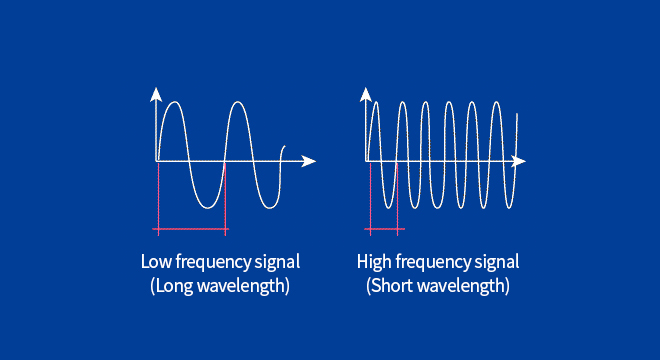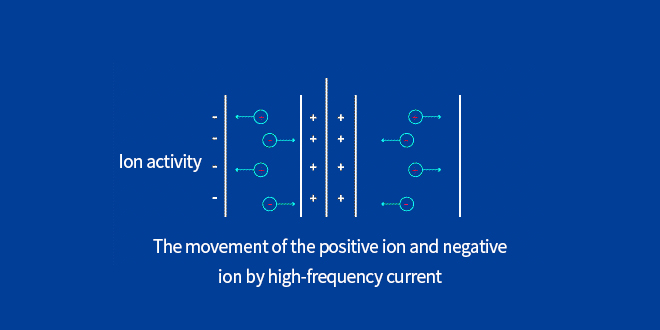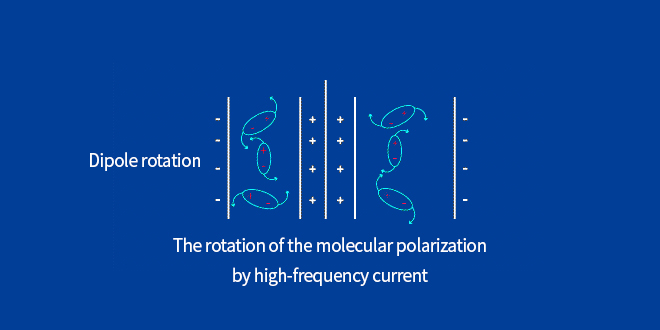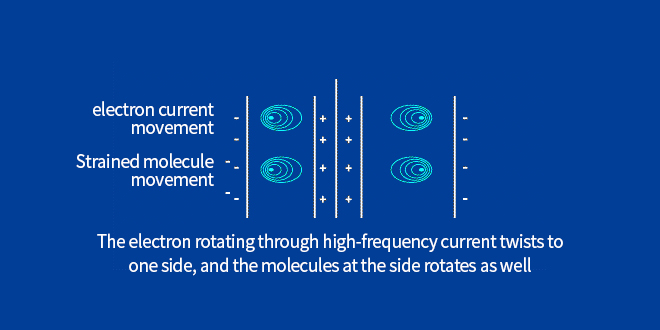Principle of High Frequency
Electrical and physical theory of HFC (High Frequency Current)

Division of frequency
- Low frequency : 1Hz~1,000Hz
- Intermediate Frequency : 1,000Hz~100,000Hz
- High Frequency : 100,000Hz (0.1MHz)
- Thermotherapy Device (EDH System) : 0.45MHz~0.6MHz
(*EDH = Endogenous Dermal Heating) - Adipo-tolysis : 0.5MHz V-RF
High Frequency
Heating effect of V-HFC diathermic treatment
Targeted tissue temperature : above 41.5℃

Biophysical of High Frequency
Convertive heat
When apply electric or electronic energy to physical tissues, molecules consist of physical tissues ingeminate its vibration and friction, and then switch electric or electronic energy to thermal energy.
Volume heating
It is called as volume heating, because therapeutic apparatus of high frequency thermotherapy transfers energy into certain parts of physical tissues.
Molecule motion
When high-frequency current flows into the body, physical tissues generate heat due to molecule motion.
Convertive heat

Ion Molecule
- In human tissue, there are numerous ions such as Na+ and K+. When current flows in one direction, ionic motion continues in one direction, causing an electrochemical reaction. However, if a high-frequency current that repeats a very short vibration is energized, ion movement occurs in one direction and then ion movement occurs in the opposite direction, so you can actually ignore the ion movement. When the ions move back and forth momentarily, they collide with other adjacent molecules to generate heat. High-frequency current can generate heat without stimulating sensory nerve fibers or motor nerve fibers because the electrochemical reaction does not occur since the pulsation period is only 0.001 ms.

Polar Molecule
- Most of the tissue is composed of water. The entire polarization molecule, such as water, is electrically neutral, but has a positive charge on one side and a negative charge on the other. Molecules that can be distinguished by ions having opposite charges are called dipoles. When an electric field is applied to these molecules, a polarization phenomenon occurs in which a positive charge is pulled toward the negative electrode and a negative charge toward the positive electrode, and rotates back and forth whenever the direction of the current changes. As polarized molecules rotate, friction with adjacent molecules generates heat.

Nonpolar Molecule
- Atoms or molecules that are not charged, such as fat, are also affected by the rapidly vibrating electric field, causing electrons orbiting the orbit to be distorted. As the direction of the electric field changes, one side has a more negative charge and the other has a more positive charge, and the electron cloud is moved because electrons are attracted from the anode and pushed away from the cathode. At this time, the atom or molecule does not directly generate heat, but it does interact with the molecules next to it.
